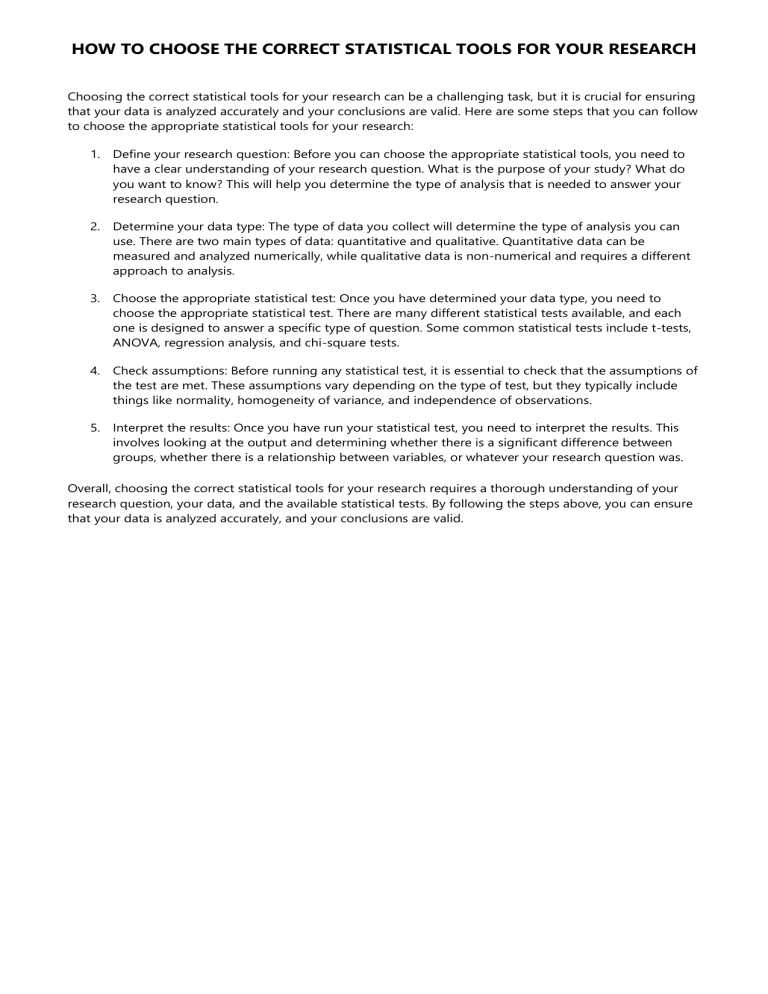
HOW TO CHOOSE THE CORRECT STATISTICAL TOOLS FOR YOUR RESEARCH Choosing the correct statistical tools for your research can be a challenging task, but it is crucial for ensuring that your data is analyzed accurately and your conclusions are valid. Here are some steps that you can follow to choose the appropriate statistical tools for your research: 1. Define your research question: Before you can choose the appropriate statistical tools, you need to have a clear understanding of your research question. What is the purpose of your study? What do you want to know? This will help you determine the type of analysis that is needed to answer your research question. 2. Determine your data type: The type of data you collect will determine the type of analysis you can use. There are two main types of data: quantitative and qualitative. Quantitative data can be measured and analyzed numerically, while qualitative data is non-numerical and requires a different approach to analysis. 3. Choose the appropriate statistical test: Once you have determined your data type, you need to choose the appropriate statistical test. There are many different statistical tests available, and each one is designed to answer a specific type of question. Some common statistical tests include t-tests, ANOVA, regression analysis, and chi-square tests. 4. Check assumptions: Before running any statistical test, it is essential to check that the assumptions of the test are met. These assumptions vary depending on the type of test, but they typically include things like normality, homogeneity of variance, and independence of observations. 5. Interpret the results: Once you have run your statistical test, you need to interpret the results. This involves looking at the output and determining whether there is a significant difference between groups, whether there is a relationship between variables, or whatever your research question was. Overall, choosing the correct statistical tools for your research requires a thorough understanding of your research question, your data, and the available statistical tests. By following the steps above, you can ensure that your data is analyzed accurately, and your conclusions are valid.



